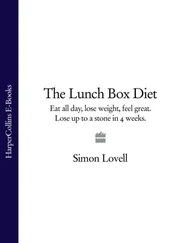The challenge comes when we want to lose weight or decide to get healthier. What we fundamentally need to do is change some of our most familiar habits. Continuing with exactly the same set of habits you have already grooved will probably hinder your weight-loss efforts, slow down your progress and lead to frustration. So to lose weight it’s important to ditch some habits and groove some new ones. Before we can do this, it’s important to have a little understanding of how a habit is formed.
We don’t often do things for the first time. Although we forget about most first-time activities, some stick in our memory for life, such as our first day at school, our first kiss or our first driving lesson. However, the vast majority of everyday activities are behaviours we repeat over and over again. What most of our first-time experiences have in common is that we act in a deliberate and conscious fashion. When we do something for the first time we may:
• search out information
• plan when, where and how to perform the behaviour
• be careful when doing it
• ask for assistance from other people
• perhaps act clumsily or awkwardly.
Afterwards, we may think back over what we have done, evaluate the outcome, plan to do it again or do it differently next time. This may all sound very clinical and regimented but, subconsciously, this is how our brains work in the early stages of forming behaviours. This process changes dramatically, however, once we start repeating a behaviour. After a while we don’t plan, think or evaluate any more. When the time comes to act, we simply act and habit is born.
How Your Brain Forms a Habit
The brain is responsible for receiving, processing and sending out messages based on vast amounts of information. This information is carried via neurons; I like to think of these as message-carriers. Each message-carrier needs to travel to a specific destination in the brain for the information in the message to be acted on. The message-carriers reach their specific part of the brain by travelling along neural pathways; you can think of these as a mini transport system. There are millions and millions of neurons in the brain, all carrying messages and travelling along neural pathways. Different parts of the brain deal with different types of information, and if the information goes to the wrong part of the brain or doesn’t reach its correct end destination, the information is lost, never to be acted upon.
Although this is a major simplification of the amazingly complex workings of our brains, you can appreciate the brain is a very busy place. Our brains simply cannot process all this information. At their end destination the neurons deliver their message; their information gets processed and an action may or may not occur. The brain gets very good at doing the simplest thing: taking a message and sending it along the most accessible neural pathway, delivering its message and creating an action. Some of these actions are so familiar that they become automatic responses requiring no conscious thinking by us. When this happens you’ve given birth to a habit.
Other bits of information can never reach their specific end destination in the brain, so the part of the brain responsible for handling the information to carry out a particular action becomes dormant. Your brain may receive the same information again and again but each time the message-carrier gets lost in the smaller back roads of the brain’s transport system, never to reach its destination.
How this Relates to Habits
So now we can begin to see why applying the five-per-cent rule and taking small steps can be so effective. If your brain is already doing a similar action, the pathways taking the information will be established. Making a small tweak to that action is therefore easier for your brain to process and develop than trying to carry out a brand-new action that appears totally alien. The message-carriers will need to travel along unfamiliar neural pathways to a destination in the brain that may be dormant.
Habit grooving – getting your brain to work with you – need not be that difficult. The trick is to piggy-back your new habit onto something you may already be doing so both your brain and your body have a familiar reference point.
Конец ознакомительного фрагмента.
Текст предоставлен ООО «ЛитРес».
Прочитайте эту книгу целиком, купив полную легальную версию на ЛитРес.
Безопасно оплатить книгу можно банковской картой Visa, MasterCard, Maestro, со счета мобильного телефона, с платежного терминала, в салоне МТС или Связной, через PayPal, WebMoney, Яндекс.Деньги, QIWI Кошелек, бонусными картами или другим удобным Вам способом.












